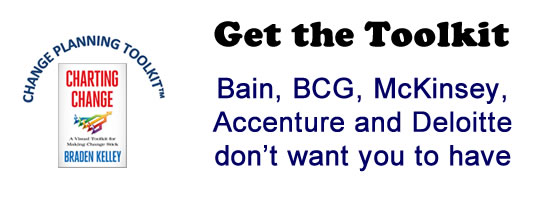Stop Trying to Win the Battle Against Fake News and Fake Influence
The greater the value of any technology, the greater the disruption and abuse. That’s OK as long as we also keep this in mind.

In his book Writing on the Wall: Social Media — The First 2,000 Years Tom Standage writes about what may well be the earliest example of social influence, dating back to 59BC, when Julius Caesar decreed that a daily summary of the Roman senate and the people’s assembly be published.
Called the “acta diurna populi Romani,” the world’s first “post,” wasn’t copied and distributed but rather posted outside of the Roman forum for everyone to read and, if they wanted to play the role of the local pundit, copy by hand to repost and share with others.
Of course, there was little that anyone in a remote village far from the Roman forum could do to fact check whatever was passed along by those pundits. While Standage doesn’t talk about it specifically, I can well imagine that at some point some toga toting innovator had the bright idea to spin the news of those posts to his ends by purposefully altering the content of the message as it was passed along.
Sharing information and creating transparency always comes with risk; often the best we can hope for is that it’s less than the value it also delivers.
2000 years later we’ve moved from posting on the door of the Roman forum for a few hundred to read, to the metaphorical front door of Twitter, for a few billion people. Yet little else has changed. Except, of course, that buying influence, once a game that could only be played by governments and large corporations, is now being played by anyone with a few hundred dollars to buy several thousand social media followers. Suddenly we all have the option to be influencers; an opportunity that appears to be much to tantalizing or many to pass by.
The Follower Factory
A recent New York Times story titled ‘The Follower Factory’ described how influence has become an enormous marketplace where celebrities, politicians, professional athletes, bloggers, and even billionaires purchase twitter followers and YouTube views to improve their perceived ability to yield influence.
Clearly we’ve seen the impact this can have on political elections
This doesn’t mean that someone buying influence through a full page ad in the New York Times has more or less integrity than a blogger buying 5000 retweets, but it certainly does make it harder to determine who has genuine influence from those who just want to create the illusion of influence. At least when you view an ad you know it’s paid for. When you evaluate someone’s influence by the number of twitter followers they have you have no idea how many of those followers are real versus purchased.
Similarly, it’s never clear (at least not without research) if an influencer is even real. The bots used to post, repost, and target influence towards specific individuals and groups of individuals have become a standard part of the hacker-influencers arsenal. This has become clear in what’s been brought to light about the use of social media during the last presidential election.
The slippery slope this creates is precipitously steep. The foundations of a modern democratic society are based on the reporting of unbiased facts. Journalistic integrity, the validity of independent research, academic and scientific papers are the pillars that support the foundation on which we make informed decisions about our health, our leaders, and our economy. When the validity and integrity of these sources is compromised so is our ability to make educated choices. And with AI taking on the ability to conduct conversations that are indistinguishable from that of a human this is only going to get much worse.
“Likes have become the new gold, a form of currency; where affluence once created influence, now influence creates a new affluence.”
Which brings us to what may well be one of the hardest and most important questions to answer if social media is to be more than yet another means to manipulate people and markets, “How do you determine what constitutes valid influence, and when does influence turn into manipulation?”
The answers so far are vigilance and due diligence. In the same way that 19th and 20th century readers of newspapers and mass media had to develop an awareness of how advertisers were attempting to manipulate choice through clever marketing campaigns we need to develop a collective awareness of how social media can be used to do the same in far more subtle and deceptive ways.
Uncommon Sense
Likes have become the new gold, a form of currency; where affluence once created influence, now influence creates a new affluence. The proof is there daily. People will post just about anything to get attention, no matter how outrageous or absurd it may at first appear. However, it’s not the original posters who develop the momentum and traffic for these “fake” posts to go viral but rather the mindless re-posting that so many of us do throughout the day. The fact is that an extraordinary small minority of social media users develop any significantly influential original content. Even by the most generous accounts it’s less than 5%. The rest simply curate and re-post. Often without any regard for the validity of what’s being re-posted. If it looks interesting and if it will get “likes” it’s fair game.
We’ve all seen these, and sometimes been party to their proliferation. For example, aunt Mildred’s post that if you’re held up at gunpoint while withdrawing money from an ATM, entering your PIN backwards will summon the police, record the criminal with the ATM camera, and use a special device to jam the wad of money you just withdrew in the dispenser so that the criminal can’t pull it out. (No, it won’t! See this.)
A variety of sites, such as Snopes.com, have popped up to help check these sorts of claims. Other sites, such as Factcheck.org, do the same for news focused on specific areas, such as politics.
However, these sites require that you to take the time to fact check manually each time you read something. The volume of activity on social media makes that an unscalable solution to the scope of the problem. I’d expect to see some sort of integration between fact checkers and personal news feeds in the very near future.
Fact Check Please
A more sophisticated form of fact checking is being used by Facebook, which is attempting to police face news through the use of automated and human fact checking as well as its users; in much the same way that Wikipedia relies on users to report inaccuracies or fake entries. While the challenge is the volume of activity on Facebook, fact checking can be scaled if adequate resources are dedicated to it. However, this works to identify fake news but it doesn’t solve the larger problem of influence, which comes directly from the size of someone’s tribe or the volume of social media activity (posts/tweets) that they have.
Authenticating Algorithms
Another approach that’s starting to gain traction is the use of algorithms to determine influence by separating organic and original content from that of simple volume of activity that someone has, which can easily be gamed by buying and boosting traffic. This tells you who has genuine influence based on originality of content and work product rather than just volume of reposts/retweets.
For example Thinkers 360 is an online service that ranks influencers, and what are often referred to as Thought Leaders, by taking into account the original content they produce, and their actual achievements, in terms of patents, businesses founded, and other relatively difficult to fake accomplishments. (Full disclosure: I became aware of Thinkers 360 after I saw myself ranked on several of their Leader Boards.) You can become a member of Thinkers 360 and have your content curated, but you can’t buy your way onto their rankings or increase your ranking based on membership. Instead the platform determines influence based purely on its automated algorithms.
According to Thinkers 360 founder Nicholas Evans,
“One of the issues with influencer rankings is that they most often look solely at social media – measuring followers, connections, tweets, likes and shares. This can be highly valuable if you’re looking exclusively for influencers who can help amplify your message via their social networks, but it can also be susceptible to individuals who are gaming the system. Typical influencer rankings, while highly valuable, do not measure thought leadership, are susceptible to brute force (i.e. excessive postings to move up in the rankings), may rank individuals broadcasting only 3rd party content, have no measure of content quality, and the gamification nature of the rankings encourages spamming.”
Too Good To Ignore
A third approach is to rely on metrics that relate to the engagement of a post, or an individual’s social media account, rather than just its raw counts/clicks/views/followers. For example, last month I had over 400,000 views of my Inc column. But that doesn’t tell me, or anyone else, if readers actually did anything more than click on the title of my columns 400,000 times. Nor does it tell me how many were organic views instead of those generated by retweets on Twitter or reposts on Facebook?
A better metric of influence is the amount of time people spent actually reading the column, which, in this case, averages about one and one-half minutes for each viewer. That’s long enough for each viewer to read about halfway through a typical column, or just over one year of one person reading my columns 24/7!
The problem of course is that while I have access to these very detailed metrics, you don’t have access to them as a reader, which, it could be argued, makes much more sense.
This asymmetry between the data available to content providers and that available to content consumers is at the heart of the problem of peddling influence and fake news. It’s sort of like fighting a war where one side has rocks and sticks and the other has machine guns. In case it’s not clear, you and I are not the ones toting the machine guns when it comes to social media.
Weapons Of Mass Disruption
Which brings me to what ultimately is the only answer to how we deal with the manipulation of social media that delivers scalable and sustainable value.
What constitutes authentic influence is always buried in the data. What we need to get better at is analyzing the data behind social media use and making it more transparent. Revealing the otherwise invisible patterns in the underlying data provides fairly irrefutable proof of provenance, originality, and integrity of influence. It also allows the marketplace and the social media community to police itself. This is how Facebook and Twitter discovered a series of fake accounts that they said were set up by Iran to spread disinformation.
These same tools and data need to be made available to consumers of social media content.
Clearly, what we have here is an arms race that threatens society, democracy, free markets, and global stability just as much as any other weapon of mass destruction or mass disruption ever has.
We may be far from wining the social media war on “fake,” and it’s likely that there is no such thing as a final victory.
Instead we should think in terms that are echoed in the words of the American abolitionist Wendell Phillips, who once said,
“Eternal vigilance is the price of liberty; power is ever stealing from the many to the few.”
If anything has changed in the last 2000 years it is that power has increasingly been shifted to the many from the few. Yes, there is still great imbalance, but that does not negate the simultaneous progress that’s been made. Social media is jut one more step (perhaps a leap) in that direction. Ultimately all we need to do is make sure that its value outweighs its risks.
This article was originally published on Inc.
Wait! Before you go…
Choose how you want the latest innovation content delivered to you:
- Daily — RSS Feed — Email — Twitter — Facebook — Linkedin Today
- Weekly — Email Newsletter — Free Magazine — Linkedin Group
 Tom Koulopoulos is the author of 10 books and founder of the Delphi Group, a 25-year-old Boston-based think tank and a past Inc. 500 company that focuses on innovation and the future of business. He tweets from @tkspeaks.
Tom Koulopoulos is the author of 10 books and founder of the Delphi Group, a 25-year-old Boston-based think tank and a past Inc. 500 company that focuses on innovation and the future of business. He tweets from @tkspeaks.
NEVER MISS ANOTHER NEWSLETTER!
LATEST BLOGS
The Importance of Packaging
Let’s talk about packaging. Packaging can be thought about in many different ways, but if we think purely about the purpose of packaging first, we find the purpose is to: contain the product, communicate product information, …
Read MoreWhy the World Cup is a Big Deal
After living overseas in Germany and England and now coming back to the United States, I have a completely different perspective on Football (or Soccer as we call it in the United States). With the World Cup in full swing, I thought I would tackle the subject of Football and why it is the most popular sport in the world.
Read More


